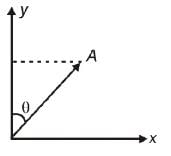Test: Addition Of A System Of Coplanar Forces - Civil Engineering (CE) MCQ
14 Questions MCQ Test - Test: Addition Of A System Of Coplanar Forces
Which of the following statement is true?
For two vectors defined by an arrow with a head and a tail. The length of each vector and the angle between them represents:
If a vector is multiplied by a scalar:
A force vector with magnitude R and making an angle α with the x-axis is having its component along x-axis and y-axis as:
Dividing the X-axis component and the Y-axis component of the of the vector making an angle with Y-axis θ will give us.
Vector shown in the figure below have a length of 3m and the angles shown A and B are 60 and 30 degrees each. Calculate the X-axis and Y-axis components:
Shown as in the figure below, A=60 degree and B=30 degree. Calculate the total length obtained by adding the x-axis component of both the vectors.
The magnitude of the resultant of the two vectors is always_____________
If two equal vector forces are mutually perpendicular then the resultant force is acting at which angle as compared to one of the vector?
What is the direction of the resultant vector if two vectors having equal length is placed in the Cartesian plane at origin as, one being parallel to and heading towards positive x-axis and the other making 165 degree with it and heading in the opposite direction of that of the first one?
Force vector R is having a______________
The resultant of three equal vectors having mutual angles being 120 degree and being originated from a single point is zero.
Every point on the force vector is having the same magnitude and the same direction as the whole force vector have.















